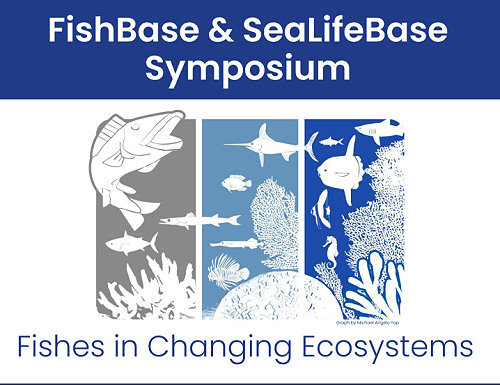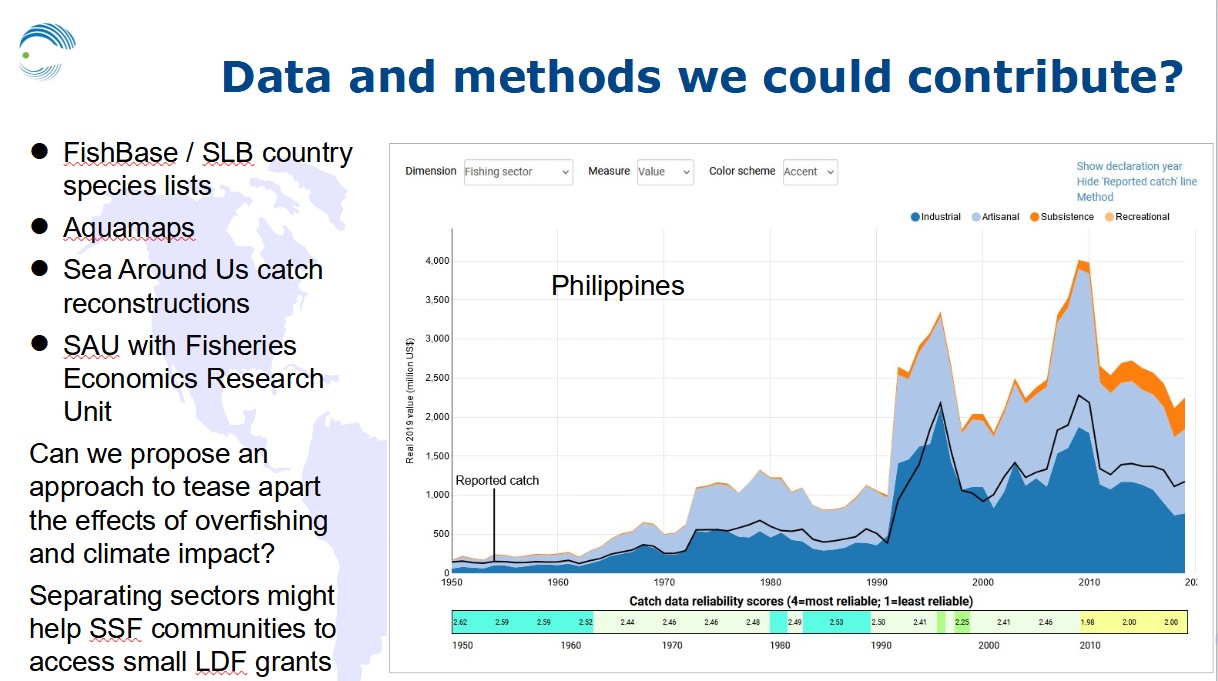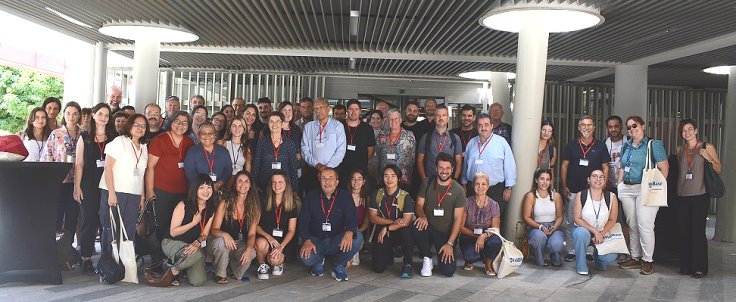 The annual FishBase-SeaLifeBase Symposium is the occasion to showcase advances in biodiversity research and use of the global information systems to promote recovery and sustainable use of marine and freshwater resources and their ecosystems. This year's symposium was convened by the Aristotle University in Thessaloniki, Greece, on 2 and 3 September 2024. Day one was focused on new findings in conjunction with the Gill Oxygen Limitation Theory (GOLT), day two gave room to a broader cross section of biodiversity related topics with a focus on the Mediterranean.
The annual FishBase-SeaLifeBase Symposium is the occasion to showcase advances in biodiversity research and use of the global information systems to promote recovery and sustainable use of marine and freshwater resources and their ecosystems. This year's symposium was convened by the Aristotle University in Thessaloniki, Greece, on 2 and 3 September 2024. Day one was focused on new findings in conjunction with the Gill Oxygen Limitation Theory (GOLT), day two gave room to a broader cross section of biodiversity related topics with a focus on the Mediterranean.
It's always a great opportunity to listen and contribute to fresh research results from the selection of FishBase and SeaLifeBase partners who can make it to the event. Dr. Daniel Pauly's keynote 'Breathing water in a warming world' illustrated how gill surface limitations in relation to a growing body volume determine growth, spawning and other major life events in gill-breathing fish. Surface limitations in combination with other structural elements determine the size and shapes of other aquatic organisms, including those not having gills. Reduction of dissolved oxygen in warming waters add constraints to water breathing organisms as gas exchange is essential for getting oxygen in to maintain the body and assimilate food into own cell growth.
Host Dr. Athanassios Tsikliras opened the second day with a talk titled 'FishBase meets the origins of ichthyology'. This was followed by a talk by Dr. Maria Lourdes 'Deng' Palomares about some ground-breaking work on reconstructing catches in Canadian freshwater bodies to start matching the great achievements of the Sea Around Us in reconstructing all types of human extractions from marine waters.
Dr. Cornelia E Nauen of Mundus maris then presented new avenues to put the power of the global information systems to use beyond informing fisheries management. Better advice to fisheries management remains extremely important as poor stewardship of aquatic resources and their ecosystems remains to this day the major threat to fish food security and nutrition and the every survival of many, by now threatened species. A study published just days before the symposium in the journal Science illustrated how overcomplex modelling had led to a massive overestimation of the rebounding capacity of depressed fisheries resources. A comment published in the same journal by Dr. Rainer Froese and Daniel Pauly summarised what needed to happen to recover depressed resources: "take out less than is regrown; let fish grow and reproduce before capture; use fishing gear with low impact on the environment and on other species; provide refuge or no-take areas as reservoirs of genetic diversity; and maintain functional food webs by reduced fishing of forage species, such as anchovies, sardines, herring, or krill".
The FishBase Guide app already presented at last year's symposium can help with the imperative to let the fish grow to reproduce, thus know the minimum spawning size and the season.

Cornelia then went on to explore two potential new applications to service large new user groups. She suggested that the discussions and possible regulatory action of the International Maritime Organization (IMO) in relation to reducing species introductions and potential and real damage by invasive species arising from maritime traffic was worth supporting. Maritime traffic ships some 11 billion tons of cargo per year around the globe. This is a route to massive transfers costing billions of USD per year from invasive species. Cargo is not the only vector. Leisure boats, some operating across ocean basins also carry stow-away species around.
She also suggested to reflect on the combined use of FishBase, SeaLifeBase, AquaMaps and the SeaAroundUs datasystems to help countries and fishers in the Global South to substantiate claims towards the Loss and Damage Fund agreed upon by the parties to the Paris Climate Agreement. The steering committee of the Fund has recently been set up in the Philippines and the World Bank pledged to serve as the secretariat for the first four years. The slides are available here.
For more information about the symposium see the full programme here.









